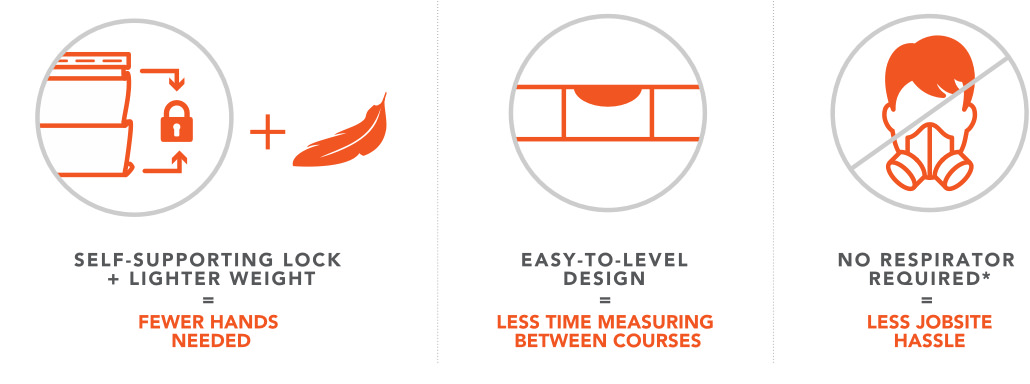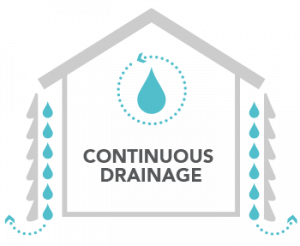Why Installers Choose Vinyl Siding
All vinyl siding is purposefully engineered to deliver maximum protection, and long-lasting beauty for nearly any style of home. With low maintenance and a myriad of features to deliver homeowner satisfaction, today’s vinyl siding is the perfect choice for lasting performance.
Durability
The homes you design should stand the test of time and Mother Nature. Vinyl siding, insulated siding, and polypropylene siding are the only claddings certified to international standards and verified by an independent quality control agency.
All certified polymeric products will withstand extreme weather events. In fact, VSI certified products are tested to:
- Withstand winds of 110 mph (most products achieve much higher ratings)
- Weather the effects of our hottest summer days, coldest winter nights, and torrential rains
- Lie flat on the wall and not buckle
- Withstand impact damage
- Meet advertised specifications for length, width, thickness, and glass
Easy To Install
Vinyl siding offers the clear business advantage. It’s inherently faster and easier to install than other cladding, offers tremendous savings on installed cost and is supported by strong industry training programs to help you assure a quality installation.

Moisture Management
Vinyl siding, insulated siding, and polypropylene siding are part-and-parcel of a weather resistant wall envelope. These claddings are hung on the wall assembly, creating a de facto drainage plane and vented clear airspace.
In certain climate zones, this eliminates the need for an additional vapor barrier — on average saving approximately $500 per home. And, as you know, polymer-based sidings do not absorb water whereas fiber-based products may disintegrate over time when moisture penetrates the plank.

Sustainability
Designing green? Today’s vinyl siding delivers recognized environmental benefits throughout its life cycle — manufacturing, transportation, installation, service life, and waste management. Vinyl siding performs better than any other cladding, except cedar, according to a life cycle assessment conducted by an independent third-party.
How does vinyl siding stack up?
Vinyl siding requires less water and energy to manufacture per square than fiber cement and less than half the energy and fuel necessary to manufacture brick and mortar. Vinyl siding even beats cedar siding on ecological toxicity. Vinyl siding can:
- Help you attain points in the 2012 ICC-700 National Green Building Standard
- Satisfy requirements listed in the International Green Construction Code
- Satisfy the requirements listed in the California Green Construction Code
- Support certification through the Leadership in Energy and Environmental Design (LEED) for Homes Rating System
- Support certification through the LEED for New Construction Rating System
Efficiency
Designing for energy efficiency? Insulated siding reduces thermal bridging by blanketing the studs on the exterior wall — keeps heat in the home during winter and out in summer. Insulated siding is included in the 2015 International Energy Conservation Code among the materials that can be used as continuous insulation outside of the building framing cavities to provide the required total wall R-value for buildings in the coldest climate zones.
Insulated siding is recognized now accepted as home insulation in various energy efficiency programs — including the checklist of building products or methodologies that can help meet the requirements under ENERGY STAR Qualified Homes Version 3. Certified insulated siding must meet or exceed an R-value of at least 3.
Bottom Line
Vinyl siding is designed to sell. It is the #1 cladding on new single family houses constructed every year (and has been for more than two decades). From the humblest Cape Cod to the most luxurious Queen Anne, vinyl and polypropylene siding, trim, and accessories get the job done.